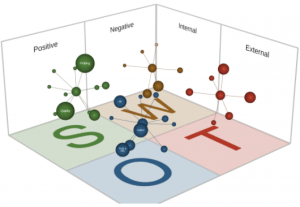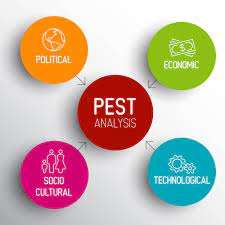
Core to every business is the need to focus resources (usually limited) to the most productive investments in the long term. This calls for an objective and realistic evaluation of one’s circumstances (capacity and resources) in light of available opportunities.
At the heart of this evaluation is the SWOT analysis framework, with the acronym representing:
• Strengths – The prevailing internal positive factors, that may include:
- Education and training
- Experience and available resources. These may include fixed assets-such as land, office and storage facilities, and human resources. The human resource base in this regard, may include available free/cheap labour (friends, immediate or extended family members).
- A large cash fund from savings, gambling winnings or borrowing/gifts from friends
• Weaknesses – Internal negative factors that may include lack of formal education/training, lack of various resources etc (the opposite of strengths).
• Opportunities – External economic factors that can be exploited for economic gain. In business, these are represented by unmet needs that are desired, or not currently desired, but where interest can be energized by the introduction of new innovations etc.
• Threats- Potential negative factors that more regularly can be compartmentalized into a PEST framework (Political/Legal, Economic, Social and Technological).
Pest Framework In Threats Analysis

- Political/legal threats include a potential change of government, and change of policy. One should also consider potential laws that may affect an industry based on observed trends in the country. In corrupt countries, politically connected business people can eliminate competition by pushing for laws that not many, or even any, competitors can abide to.
- Economic threats include loss of purchasing power in declining economies, currency devaluation in international business etc. Other economic threats include consideration for Porter’s Five Forces. Developed by Michael Porter, these include: bargaining power of suppliers, bargaining power of buyers, threat of new entrants, threat of substitutes and industry rivalry. Industry rivalry actually grows with the growth in the other four threats.
- Social threats include changes in demographics and age distribution, cultural attitudes, workplace and lifestyle threats. There could be an increase in home cooking in lieu of dining out, or more “house parties” away from “clubbing.” Fast food preferences may also change in line with increasing “healthy living,” being sort by a sizable chunk of the population.
- Technological threats are very prominent, such as the Post Office (“snail mail”) services having been overtaken by email and courier services. The increasing availability of cheap internet and smart phones has resulted in major industry losses and restructurings, including cyber cafes and print media.
In SWOT analysis, there is need to differentiate between major or minor strengths, weaknesses, opportunities and threats to acknowledge the impact of each factor (calculated by the importance, the likelihood of occurrence, and whether it is a major or minor factor). It enhances the business idea and modelling, helping set the best strategic direction for the business at a point in time.
Let SWOT analysis be at the heart to of the evaluation of all your economic endeavours.
Sam Kagiri (info@benkenya.com)

